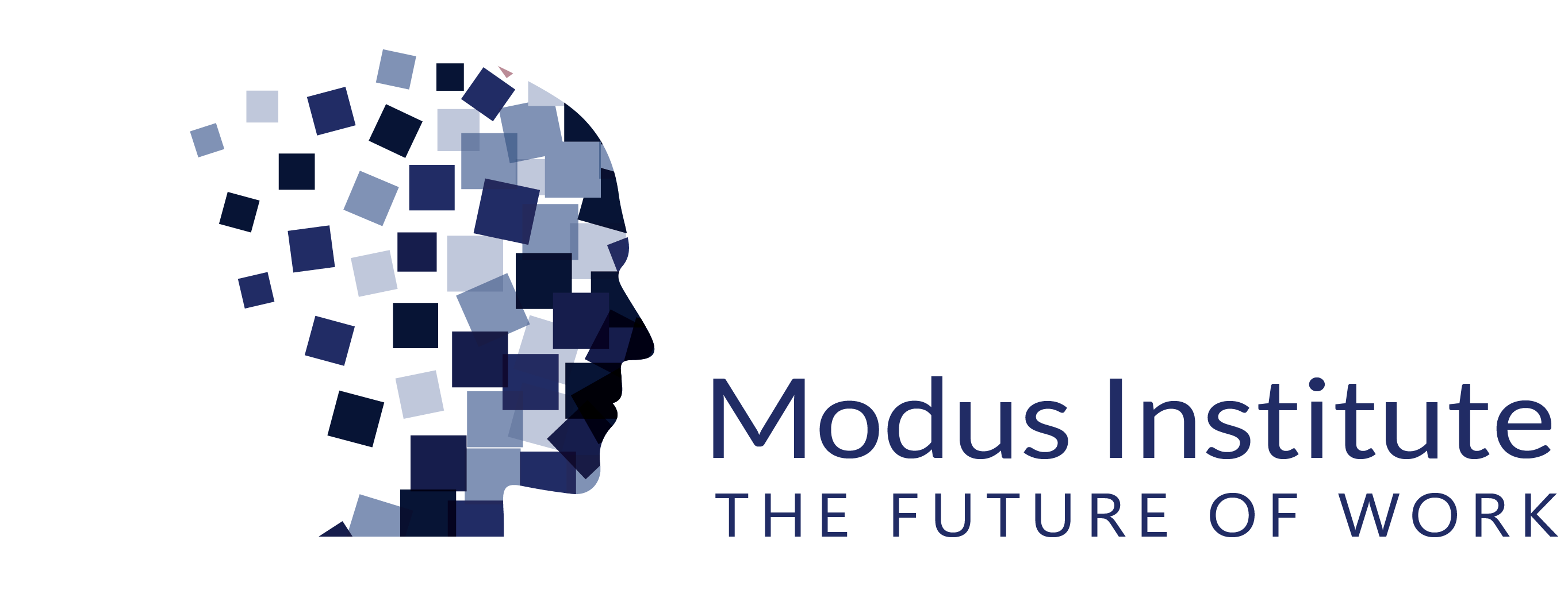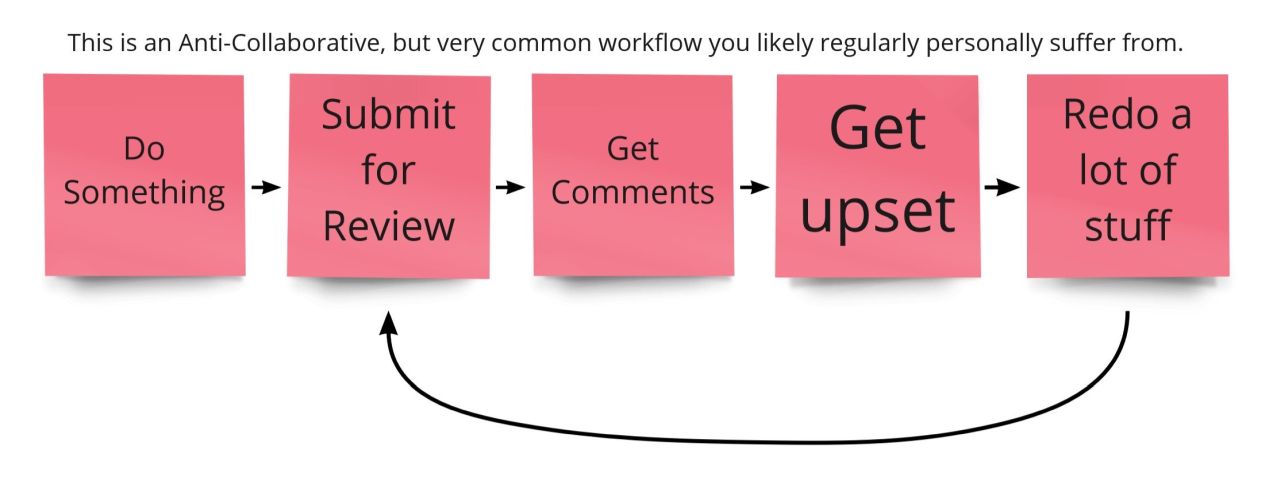
Constructive Criticism sounds good in theory. Sort of like Soothing Corporal Punishment or Enjoyable Traffic Stop. also anti-collaborative. Our friends at Asana give this helpful interpretation, “Constructive criticism focuses on providing constructive feedback, supported by specific examples, to help you improve in some area. Constructive criticism should be offered in a friendly manner with good intentions.” Note that I kept all their bolds because this is generally so unobtainable that even proponents have to fill it with guidance and disclaimers. Consultants make a lot of money “training” people to work in this unrealistic way.
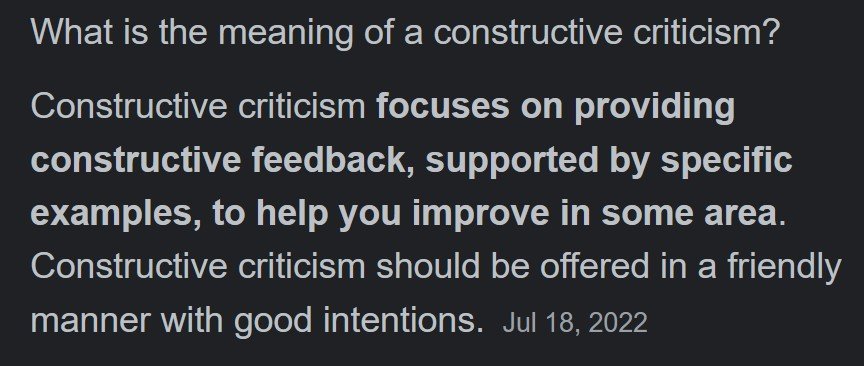
Constructive criticism proponents spend much of their time telling people not to do naturally human things like taking pride in their work, identifying personally with the product of their labor, or wanting to complete something and move on to the next. People are naturally and in the most healthy of ways, protective of their work. Asking them to accept constructive criticism without an emotional reaction is anti-collaborative.
In the 1960s Gary Burger, of the Monks, walked away from his guitar and started talking to the band. A low hum started sounding from the speakers that became louder and louder. They were instantly excited, the sound was unique, weird, and seemingly out of control.
They learned to control it and music has employed various kinds of feedback ever since.
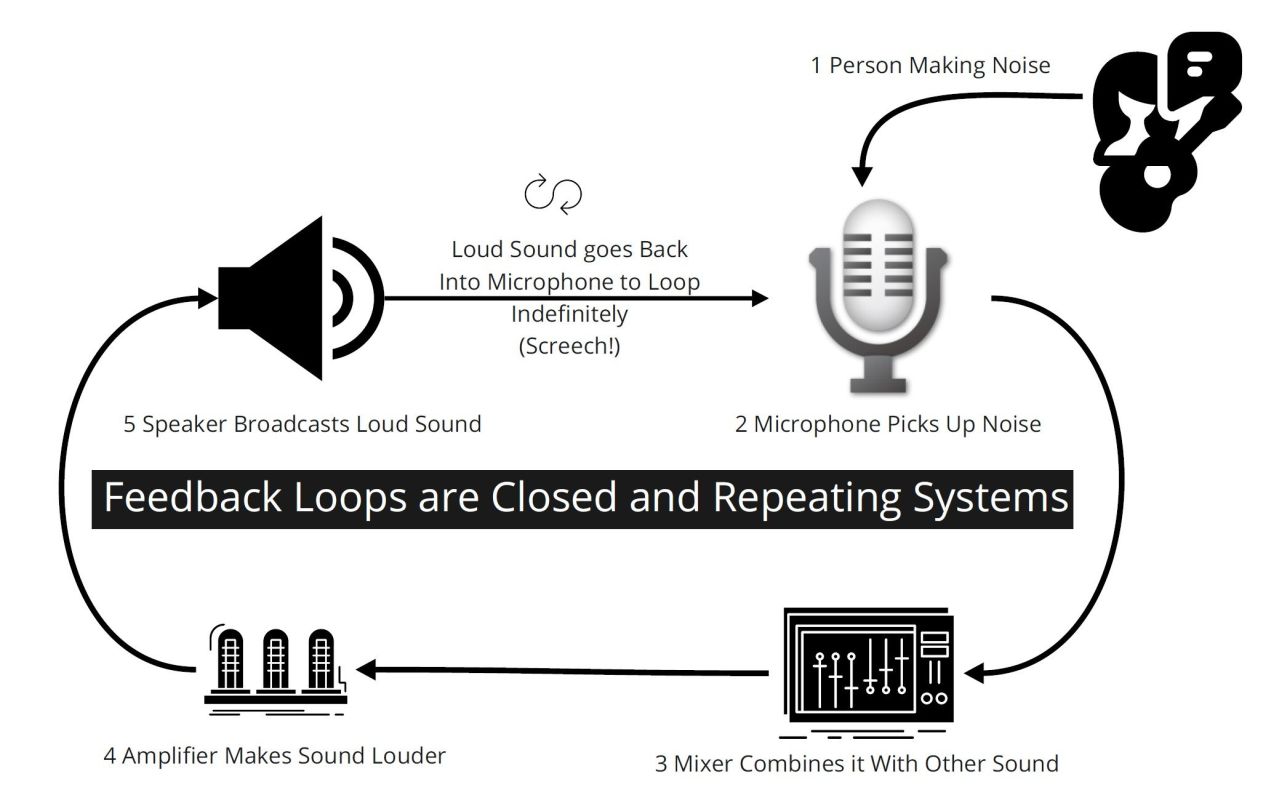
Feedback is a collaborative system. There is the initial action, then there are a series of steps where people build upon, amplify, and alter that initial action. The loops, if managed correctly, can provide the rapid creation of a complex product.
In
The Collaboration Equation we say, Individuals in teams create value. They do this primarily through the management of real feedback. Not needing comment seeking or the hidden combativeness of constructive criticism, but through actually working together.
A real system of feedback
requires participation. It means that you build into your system not “review points” but constant open channels for information and response.
To do this, pairing is always a mighty fine place to start. Two or more people actively working together in real time. Not taking pieces of the work to their private silos, but actively working together. In 2010, Tonianne and I wrote an entire book like this separated by a continent. You don’t have to be co-located.
The work the pair is doing is visualized in an Obeya. Not just a kanban, a personal kanban, or a scrum board, but a place with multiple visualizations showing progress, decisions, problems being solved, planned action, and whatever else the professionals need to get the work done. This room allows others who aren’t pairing or mobbing on the work to see where they can help.
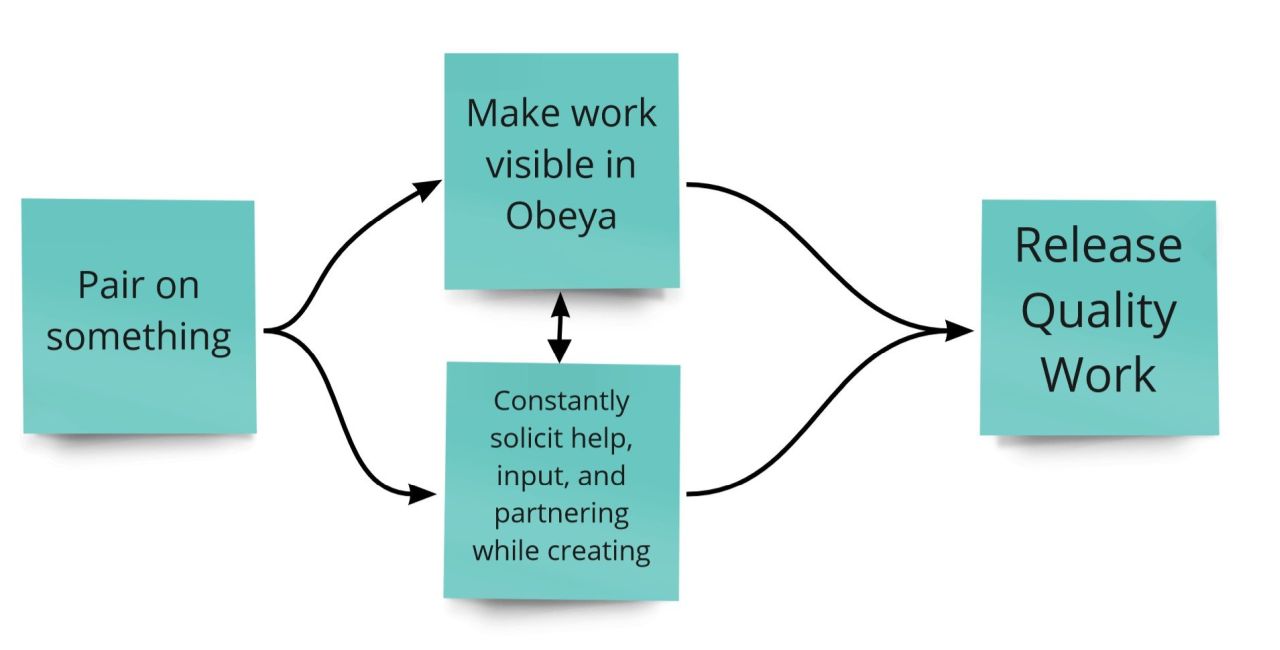
Help. Not Critique. This means that the help is timely (not after the product is completed) and an expected part of everyone’s work.
Collaborative.
This means the final product’s initial release is already vetted, reviewed, and blessed before the final version is created. No rework. No muss. No fuss.
Because feedback is a system.




